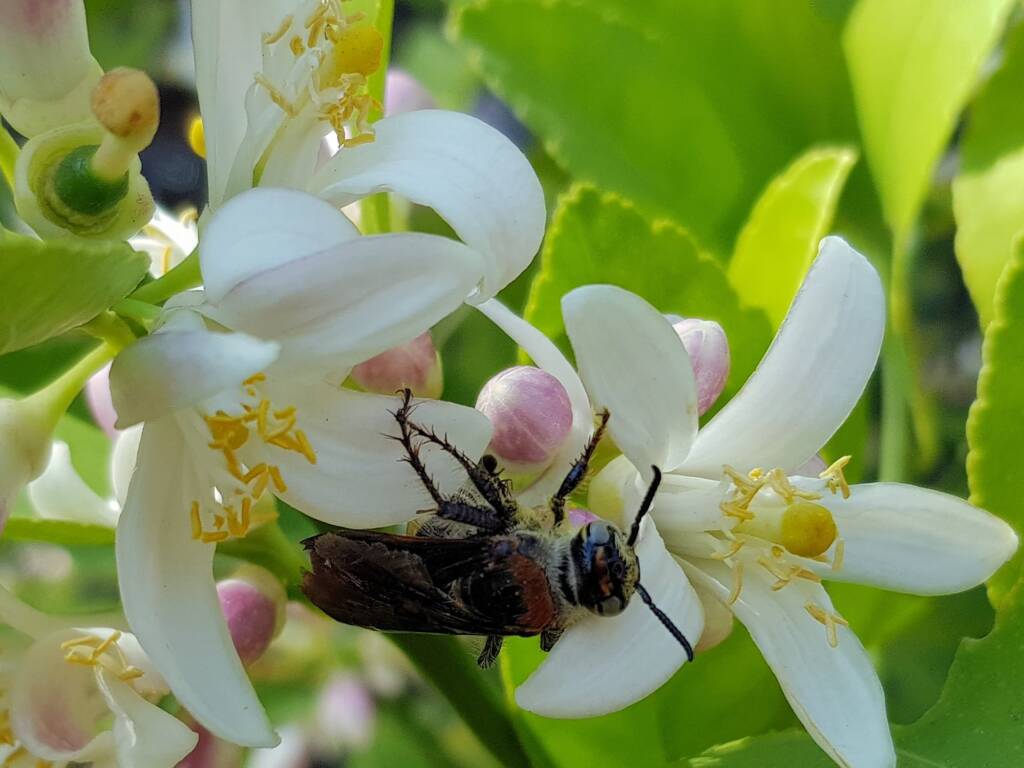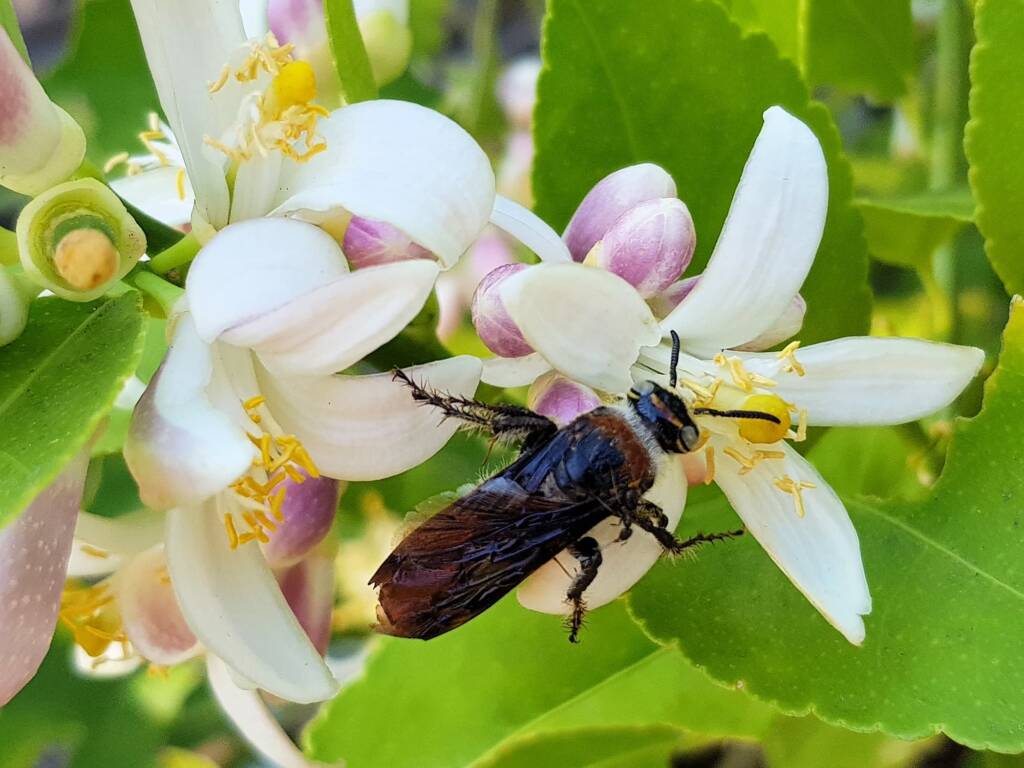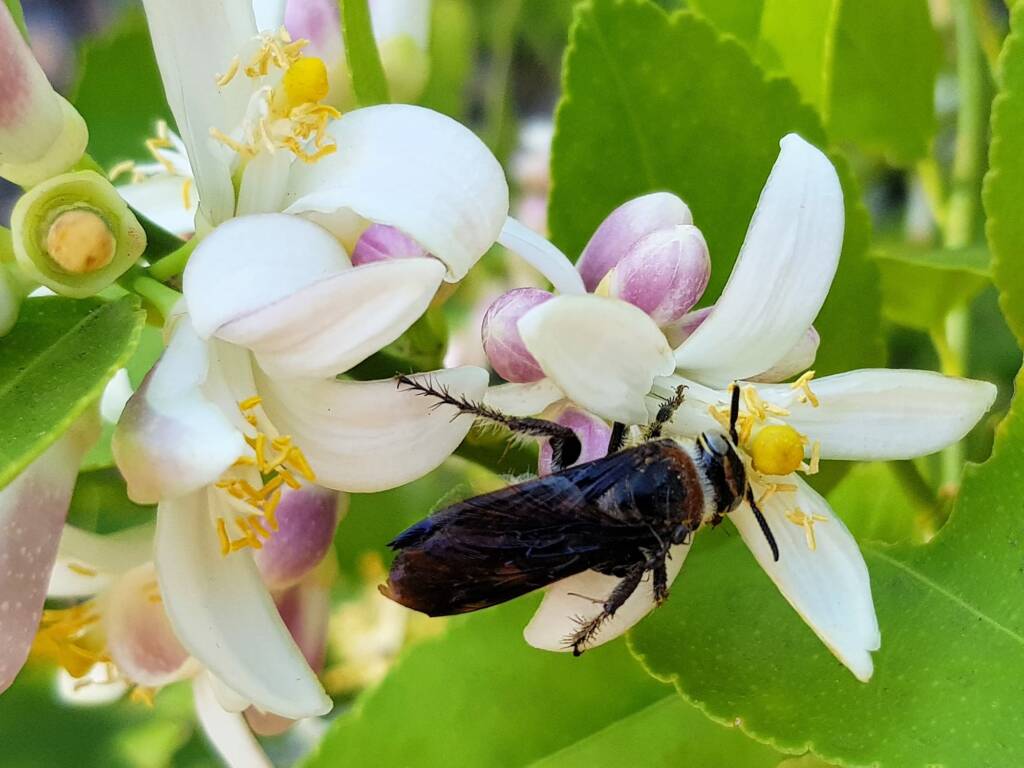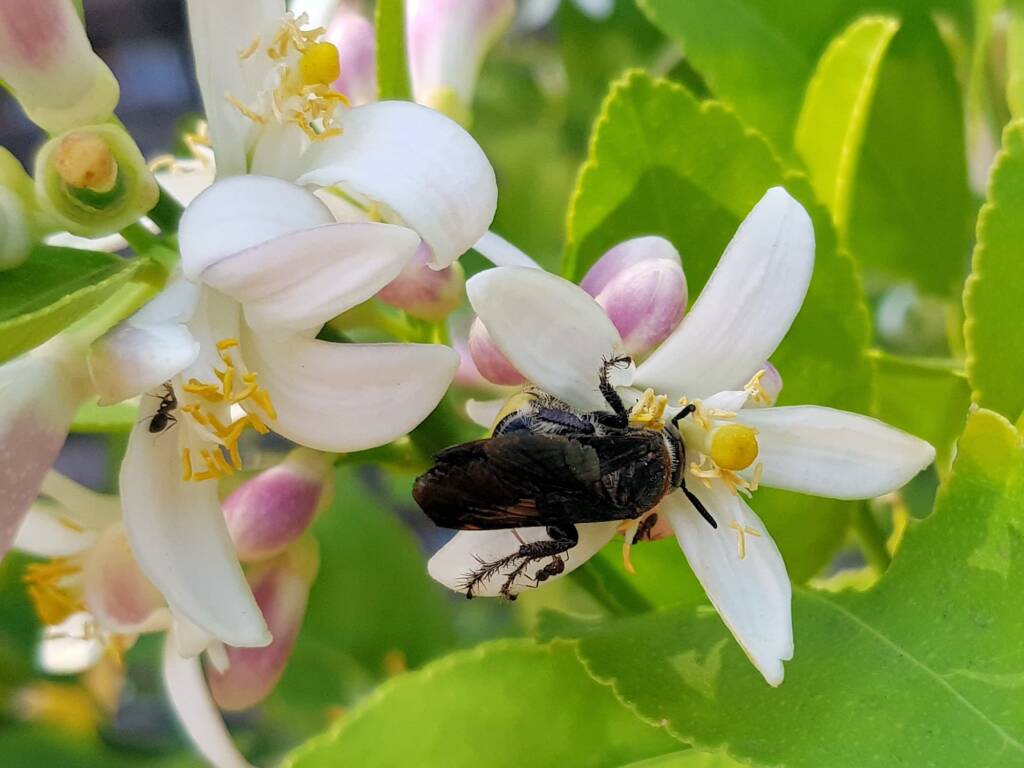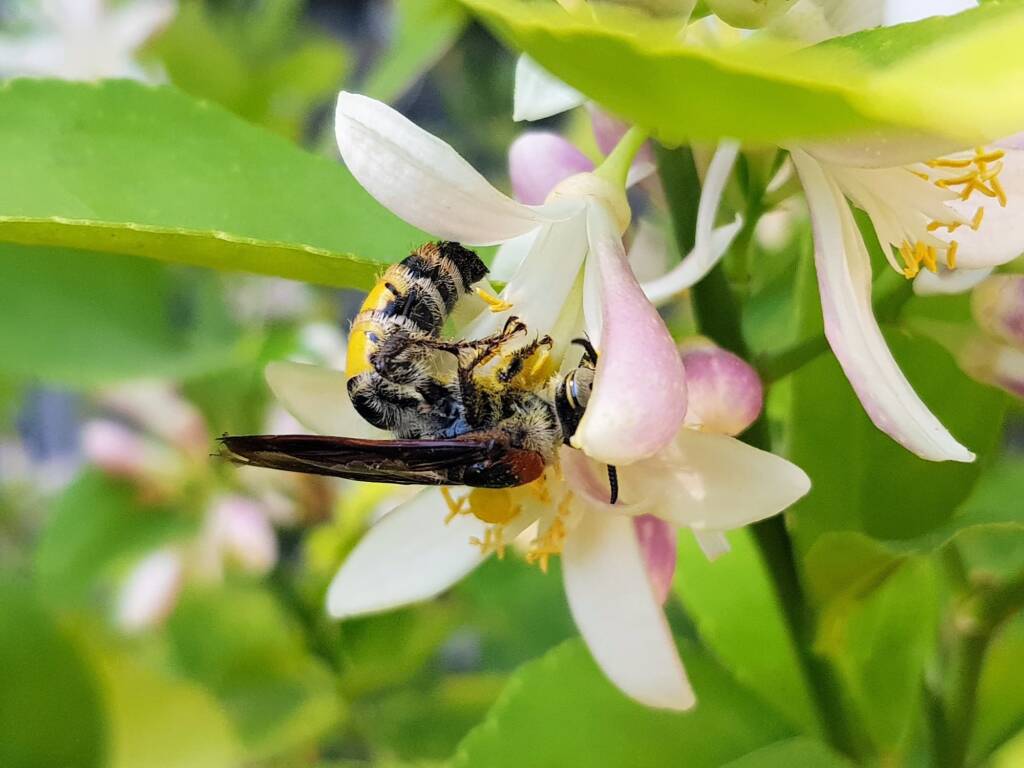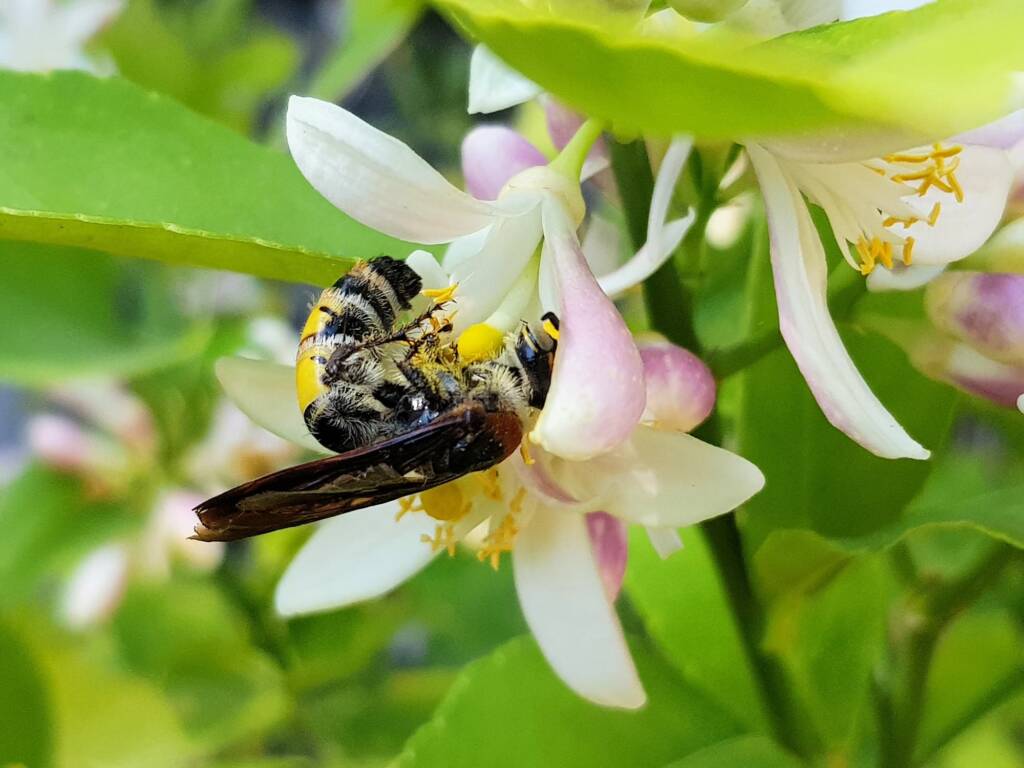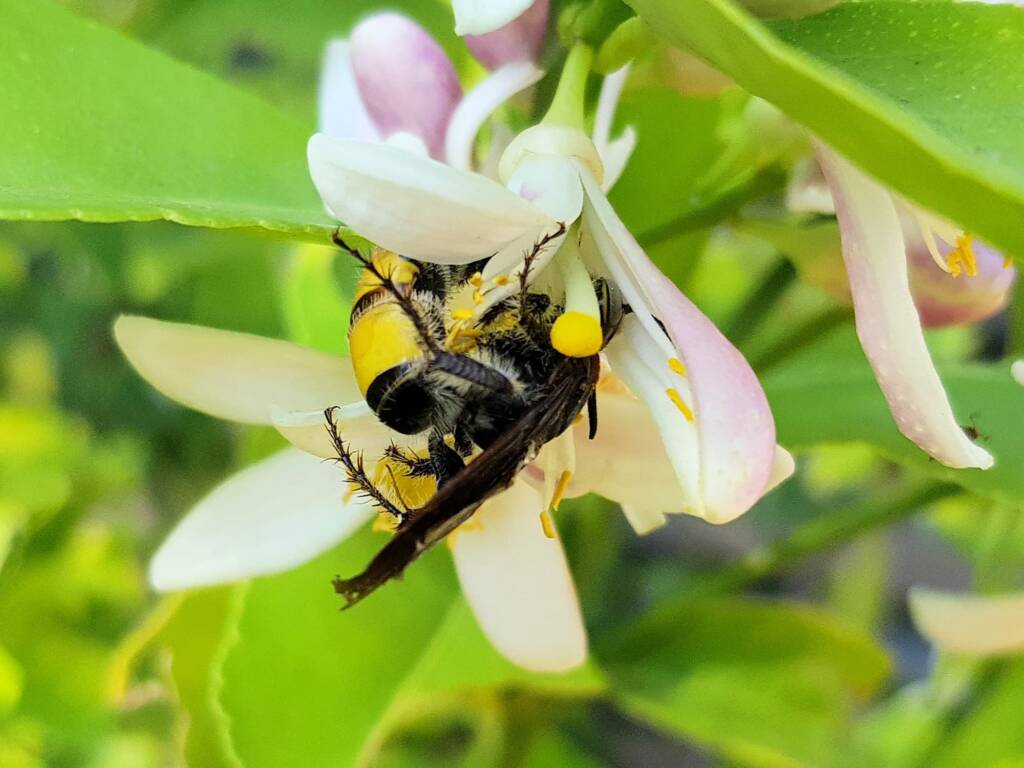Radumeris radula (Yellow Hairy Flower Wasp)Nectar Feeding Wasp and Common Black Ant
The adult Yellow Hairy Flower Wasp (Radumeris radula) feed on the nectar of select flowering plants. In the following photographs, the adult R. radula can be seen feeding on the blossoms of a flowering lemon tree in Central Australia

The female of the species have short antennae, whilst the male of the species have longer antennae, the female also being larger then the male. Both the male and female Radumeris radula have orange to brownish wings, with very fine veins towards the wing tips.
The colour of the setae on the top of the thorax of the female wasp has the distinctive rusty red-brown colour.
Whilst the Radumeris radula head is deep into the flower, feeding on the nectar, we can see its abdomen is also bent forward, the body forming a “u” shape. It is possible that this is just a form of balancing itself or a reflex action.
During this frenetic feeding by the Yellow Hairy Flower Wasp, I took approximately 125 photos (minus the blurred images). When reviewing the time stamp on the photos, it showed that I had taken this series of photos over 4 minutes… so having madly clicking away, I did not notice the black ants (that were also on the lemon shrub), until I was able to review the photos, to discover that some of the ants were paying attention to the wasp.
I have created a separate page to display this observation… of the Common Black Ant (Iridomyrmex sp) and the Yellow Hairy Flower Wasp (Radumeris radula)
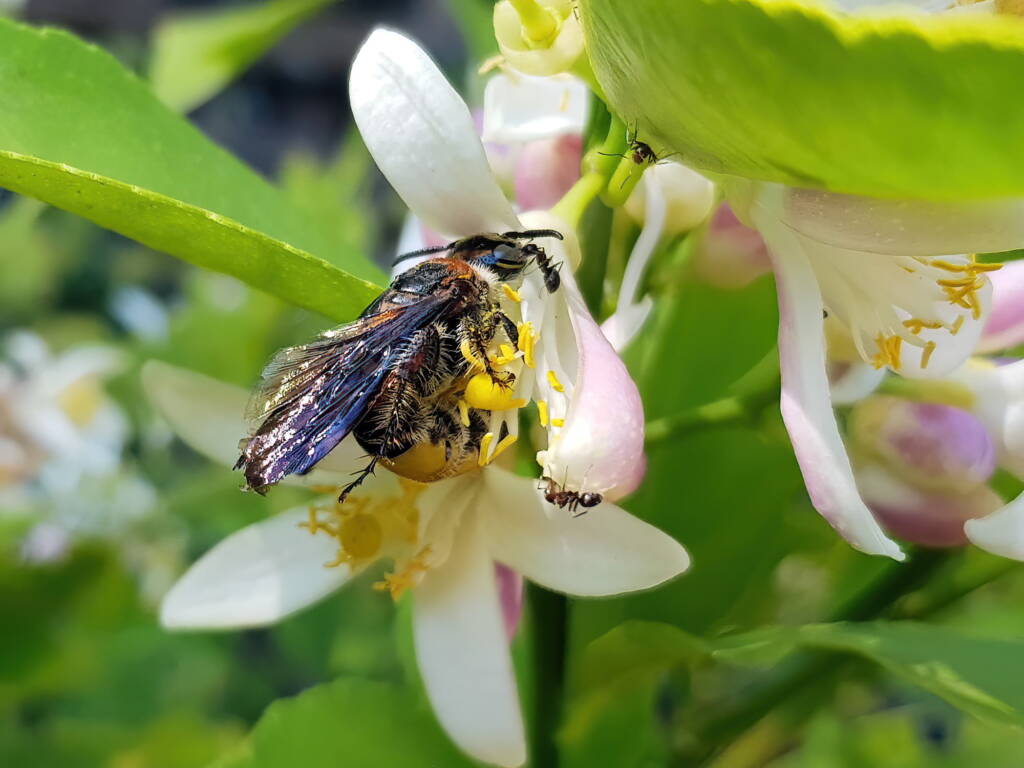
Footnote & References
- Radumeris radula, iNaturalist, http://portugal.inaturalist.org/taxa/486986-Radumeris-radula
- Radumeris radula (Fabricius, 1775), Atlas of Living Australia, https://bie.ala.org.au/species/urn:lsid:biodiversity.org.au:afd.taxon:8c26db14-0a2d-40fb-b3eb-d9d8e4f2fbbd
- Common Ants in Alice Springs, The Alice Springs Big Headed Ant Mapping Project, CSIRO, https://wildlife.lowecol.com.au/wp-content/uploads/sites/25/Ants-of-Alice-Springs-Fact-Sheet.pdf
Radumeris radula (Yellow Hairy Flower Wasp)Nectar Feeding Wasp and Common Black Ant
WaspsWasps Index Australian Large Wasps Australian Mud Nest Wasps Mud Wasp Velvet Ants Abispa ephippium Acarozumia amaliae Aulacidae Australodynerus Bembix Bembicinae Blue Hairy Flower Wasp Braconidae Chrysididae Cryptocheilus bicolor (Orange Spider Wasp) Delta latreillei (Potter Wasp) Eumeninae Ferreola handschini (Orange-collared Spider Wasp) Flower Wasps Gasteruptiid Wasp Hairy Flower Wasps Isodontia (Grass-carrying Wasp) Lissopimpla excelsa (Orchid Dupe Wasp) Mutillidae Paralastor sp. Pseudabispa bicolor ssp. nigrocinctoides Radumeris radula (Yellow Hairy Flower Wasp) Radumeris tasmaniensis (Yellow Hairy Flower Wasp) Sceliphron laetum Thynnid Wasps Tiphiidae Yellow and Black Wasp
InsectsBees Beetles Blattodea Butterflies Coleoptera Cicada Crabronidae Diptera Dragonflies & Damselflies Formicidae Hemiptera Heteroptera (True Bugs) Mango Planthopper Moths Orthoptera Orthopteroid Processionary Caterpillar Stink Bugs, Shield Bugs and Allies Syrphidae Wasps Water Scorpion (Laccotrephes tristis) Witchetty Grub









